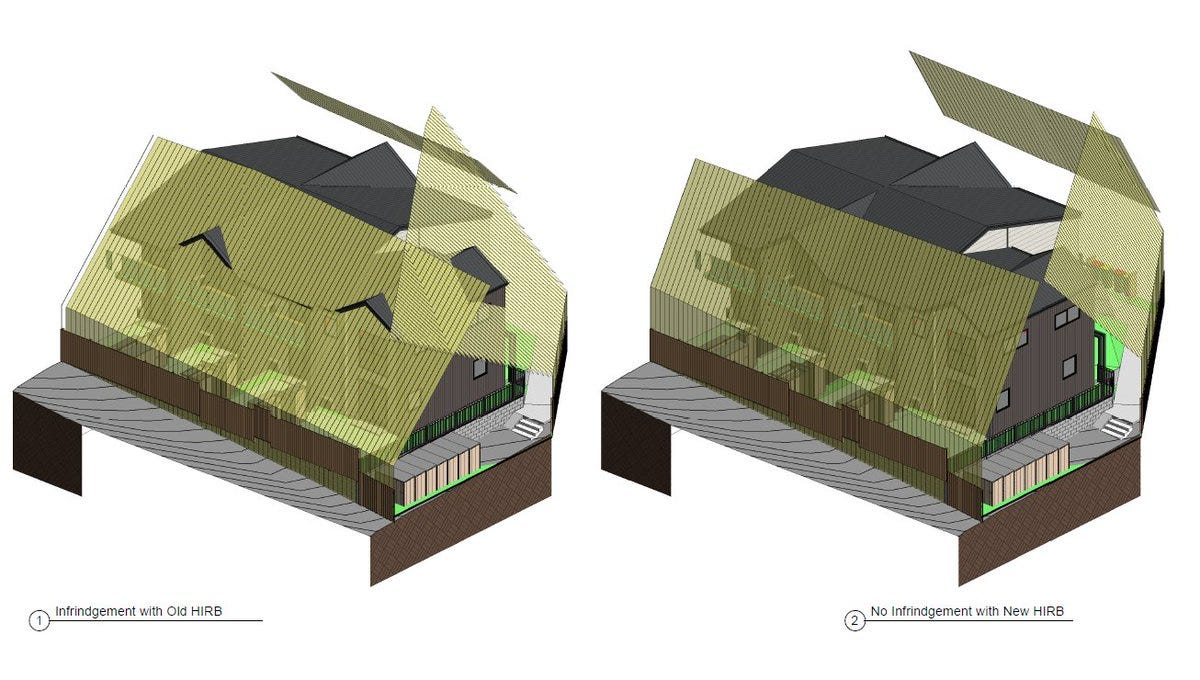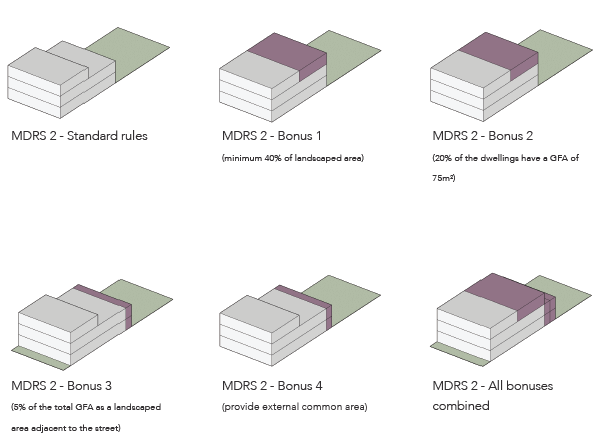Actually, the Medium Density Standards are (mostly) positive
The Medium Density Residential Standards (MDRS), continue to be criticised in the media by (some) academics, urban planners, designers and architects. While there is room for improvement, the changes will enable more homes and housing choice.
What the MDRS is likely to deliver, is similar to much of the urban infill we have seen previously, where an additional house or two is built on underutilised land at the front or rear of an existing house. If the development is compliant with the new standards, then it could be built with no resource consent, though there are many potential triggers for resource consent.
In most cases, I don’t see it being likely that one house will be demolished to build three new ones, as this is unlikely to be financially feasible. Where this is feasible, the existing house is likely to be extremely low value, and/or it is a highly desirable location. The latter of which will likely incentivise the developer to go further than three units, even though this will require a resource consent. While developments of up to three dwellings not requiring resource consent is not a silver bullet for the housing crisis, it will support housing choice and supply.
The more important part of the Act is that requires Councils to adopt height in relation to boundary standards in their residential zones, which will make achieving three storeys far easier on most sites. As illustrated by Figure 1, the existing recession planes can make it difficult to reach three storeys or even two on narrow sites.

Enabling three storeys in every neighbourhood enables the full span of stand-alone houses to two or three storey terraced housing through to apartments in developments of three storeys. Allowing for this across all of the urban area, ultimately leaves the market to decide what is built and where. If there is enough demand for apartments in a suburban setting, then these can be built and the same goes for townhouses and other 'missing middle' housing. This supports the concept of ageing in place, where you can find housing suited to your needs at different stages of your life.

The attention on the MDRS has led to speculation that the National Party would withdraw support, though positively this has been refuted, though with the door left open to “sensible changes as the standards bed in.” So what could changes look like that improve design outcomes while still enabling new housing supply and choice?
I have previously covered the Coalition for More Homes call for alternative standards to encourage development towards the front of the property to shift towards a perimeter block housing model. This approach concentrates development to the front of the site, leaving open space at the rear and outlook spaces from dwellings facing over the street or rear space, not into adjacent properties.
Holistic Urban Environments (who have since merged with The Urban Advisory) proposed something similar in their submission on the Resource Management (Enabling Housing Supply and Other Matters) Amendment Act but with separate approaches and standards for urban infill and urban redevelopment.
MDRS 1 applies to urban infill and is largely similar to the standards that were passed by parliament in 2021, though more targeted for infill development. Two additional homes would be allowed on a site, up to a maximum of three where the existing house was retained. Full redevelopment, after demolishing the existing dwelling(s), would require resource consent.
MDRS 2 would apply to full redevelopments with standards designed to incentivise development to the front of the site with height in relation to boundary standards removed to support this. Holistic Urban Environments also proposed bonus floor area for developments that would deliver higher quality landscaped areas or smaller and thus more affordable units.
While the standards can be debated and investigated further, separating how we manage urban infill and urban redevelopment in the resource consent process is an approach that can balance achieving good design and enabling housing supply. Any future review of the Medium Density Residential Standards, potentially as part of the future National Planning Framework, should consider this approach.



